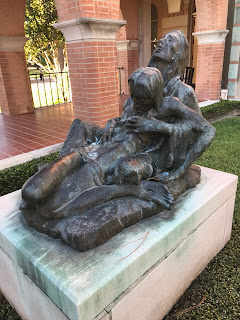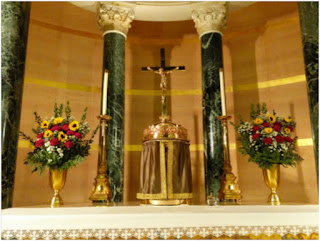The Pieta of St. Mary's
We tend to associate the term “Pieta” with Michelangelo’s marble sculpture of Mother Mary, our Seminary Patron, holding the lifeless body of Jesus, just taken down from the Cross. However, the term “Pieta” can actually refer to any artistic representation, most often sculptural, of Mary holding the dead body of Christ, such as the one we have near our Chapel here at the Seminary.
Michelangelo’s masterpiece (the only work he ever signed), though it transmits extreme sorrow, depicts the white, marble face of Mary as one filled with peace and serenity. Jesus is held across her lap, which required some proportional adjustment of Mary’s knees by Michelangelo, conveying a sense of foundational security. The message is that, even in darkness, with faith, we can still find peace.
Each Pieta conveys truth from a different facet. “Pieta” is Italian for “pity.” This translation is telling, but perhaps more telling is the antonym for “pity” provided by Webster’s Dictionary: “indifference.” This gets to heart of what both Pieta’s are calling us to do: to get out of our indifference. The suffering and death of Jesus is something that demands our engagement. We cannot be distant bystanders, but must intimately enter into the mystery of Christ’s Passion. We need to sit there with Mary, holding the body of Christ. Only in doing this can we fully grasp the beauty of what happens next: life is restored to that lifeless body and death is destroyed forever.
Written by David Michael Moses, Seminarian for the Archdiocese of Galveston-Houston





Comments
Post a Comment